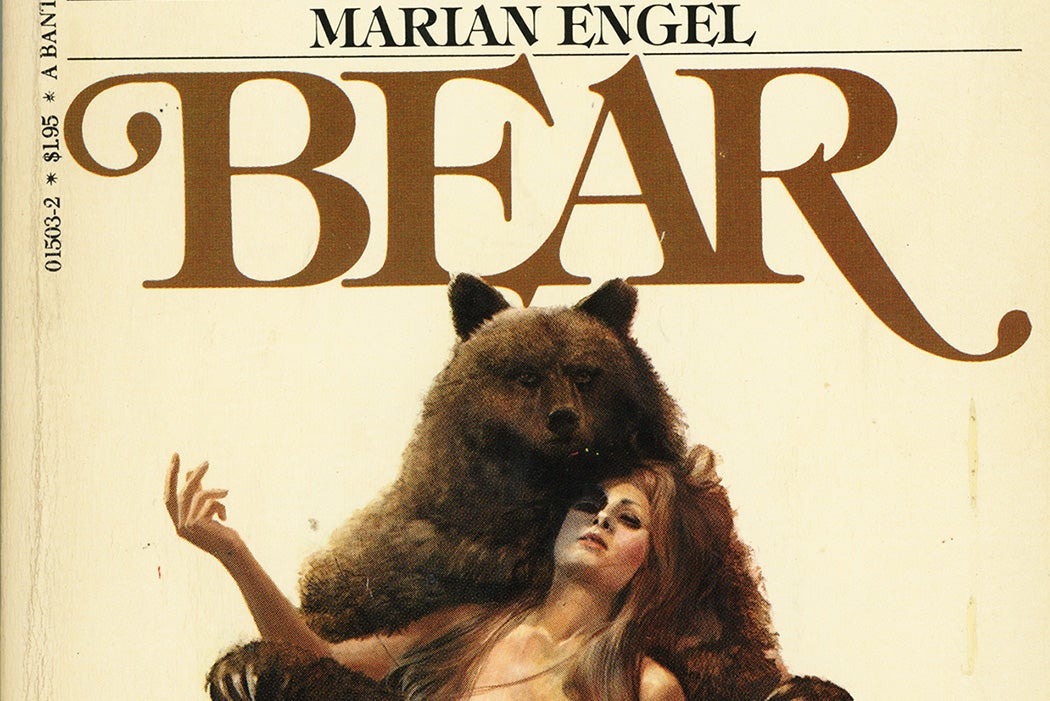Tell someone that The Handmaid’s Tale isn’t actually the most controversial novel to come out of Canada, and they’ll likely argue with you, vehemently. Present them with Marian Engel’s 1976’s Bear, in which the main female character—in a unironic, non-satirical manner—initiates a sexual affair with a bear as part of her spiritual journey, and your adversary will fall silent. It’s not even a Beauty and the Beast situation. There’s no handsome human prince hidden underneath the fur, no magic spell to be broken with true love. It’s not a fairy tale. It’s not even magical realism. The protagonist’s primary love interest is, quite literally, a bear.
The novel, set in Canada’s gloriously forested Algoma in Northeastern Ontario, follows the main character of Lou, a restless archivist dissatisfied with life in Toronto. She seeks escape and fulfillment, and subsequently, accepts a job offer to reorganize a library on remote Cary’s Island. It’s a fairly normal premise with which to start, but the plot takes an unexpected turn when Lou, desiring meaningful companionship, decides to bond with a bear prowling the area. She and the bear end up bonding a bit too much for some readers’ comfort, and the book raised many an eyebrow when it was published. The Canadian Encyclopedia has deemed it, almost as an honorific, “the most controversial novel ever written in Canada.”
Weekly Newsletter
However, some critics have argued that Engel was writing more than pornography. Literary scholar Tania Aguila-Way suggests that the bestiality effectively serves as a metaphorical commentary on Canada’s unfortunate history of over-exploitation of its proximity to nature and draws a parallel with Margaret Atwood’s environmentally themed novel 1972 novel Surfacing. According to Aguila-Way,
Bear similarly dramatizes the dangers of confusing human-animal solidarity with human-animal sameness, highlighting the political and ethical implications of this instrumentalizing logic: the protagonist’s identification with the title character of the novel…often borders on a dynamic of indigenization that echoes troubling episodes of Canada’s settler-invader history.
Catriona Sandilands insists that the human-bear dynamic is essential for steering both the main character and the reader’s psychological voyage, arguing that Lou
can neither capture the bear in the life of the mind, nor become the bear by abandoning her abstract humanity to the bear’s body. The bear, here, is the Other; he cannot be colonized, be made human, any more than Lou can “go wild,” become the bear, much as she tries.
Today, perhaps because internet culture has made contemporary audiences more difficult to shock, Bear has become something of a joke in the literary world. In 2014, the book’s eroticized front cover became an internet memetic mutation (meme). Maybe the most surprising thing about Bear is that Guillermo del Toro, director of the Oscar-winning 2017 The Shape of Water, which features a human-fish romance, hasn’t adapted this book to screen yet.
Support JSTOR Daily! Join our new membership program on Patreon today.







